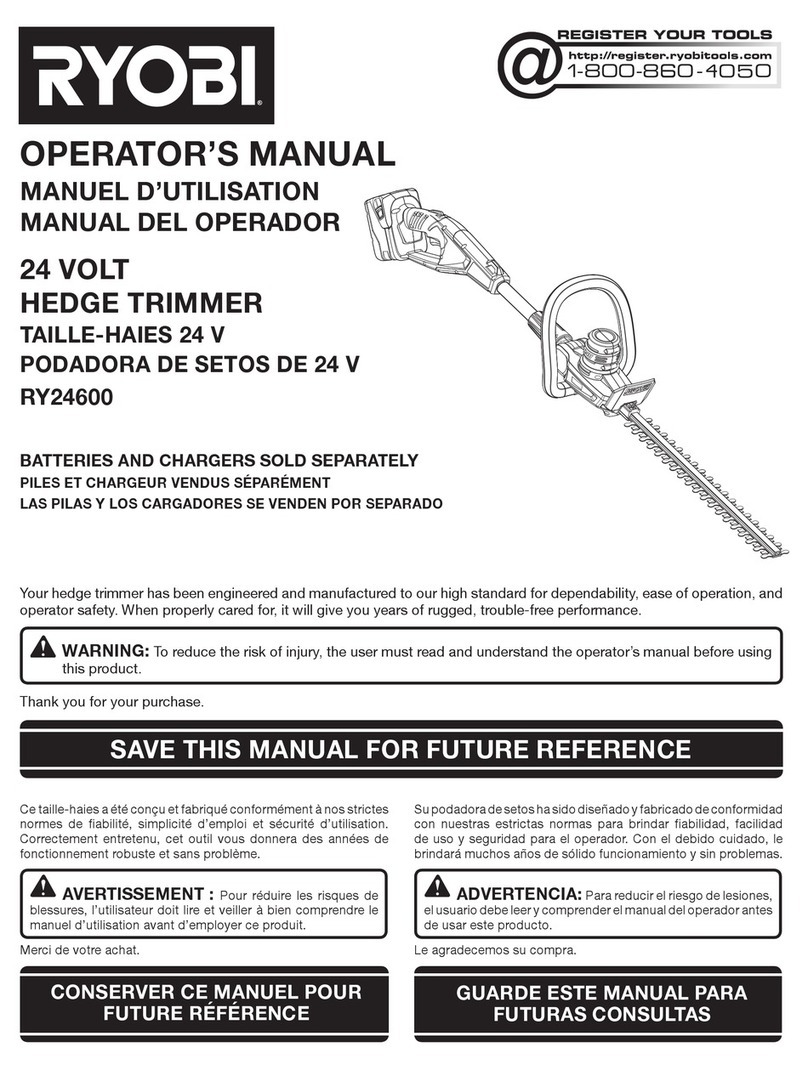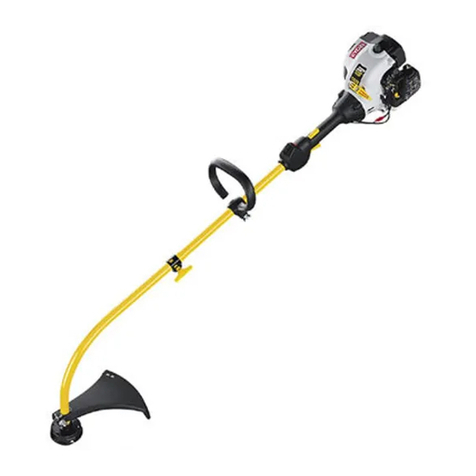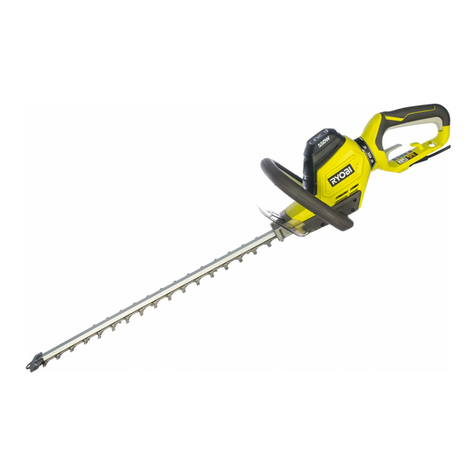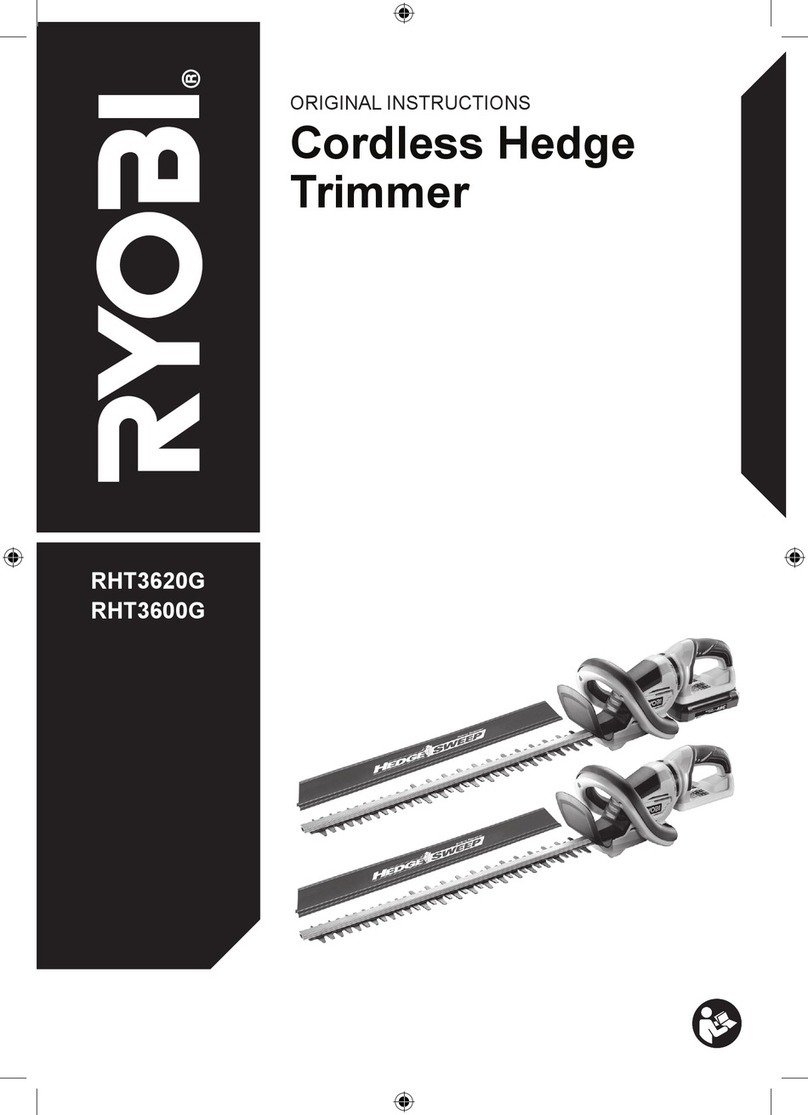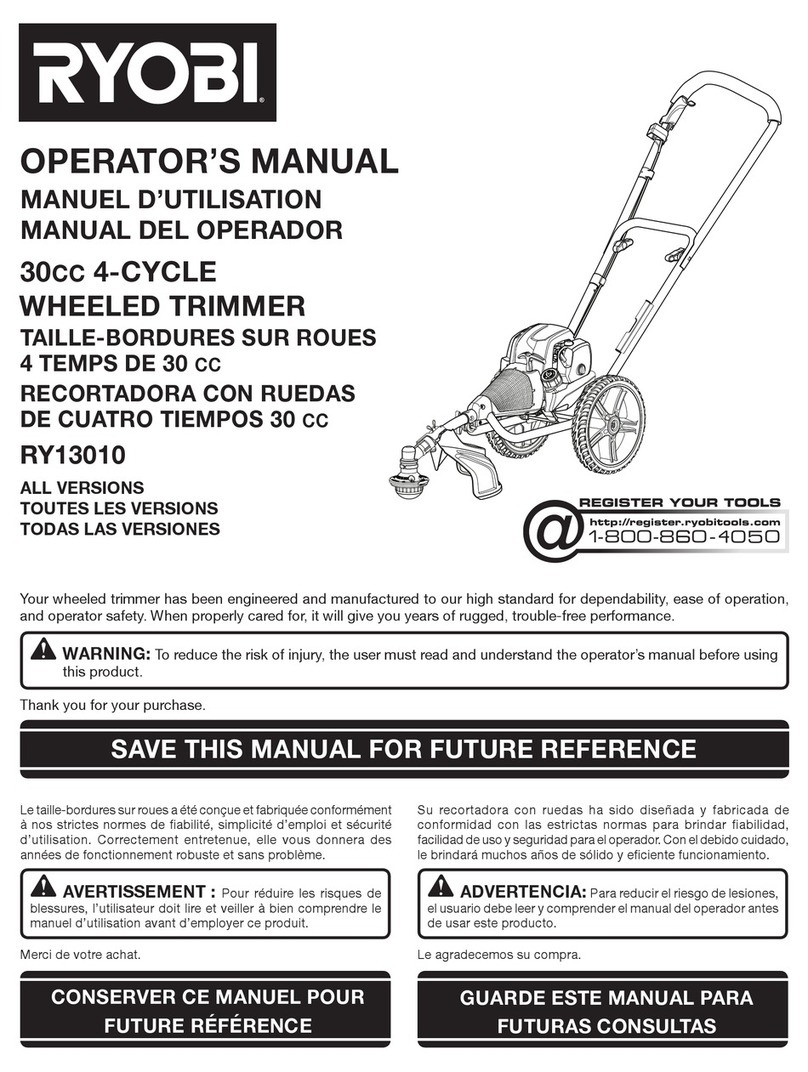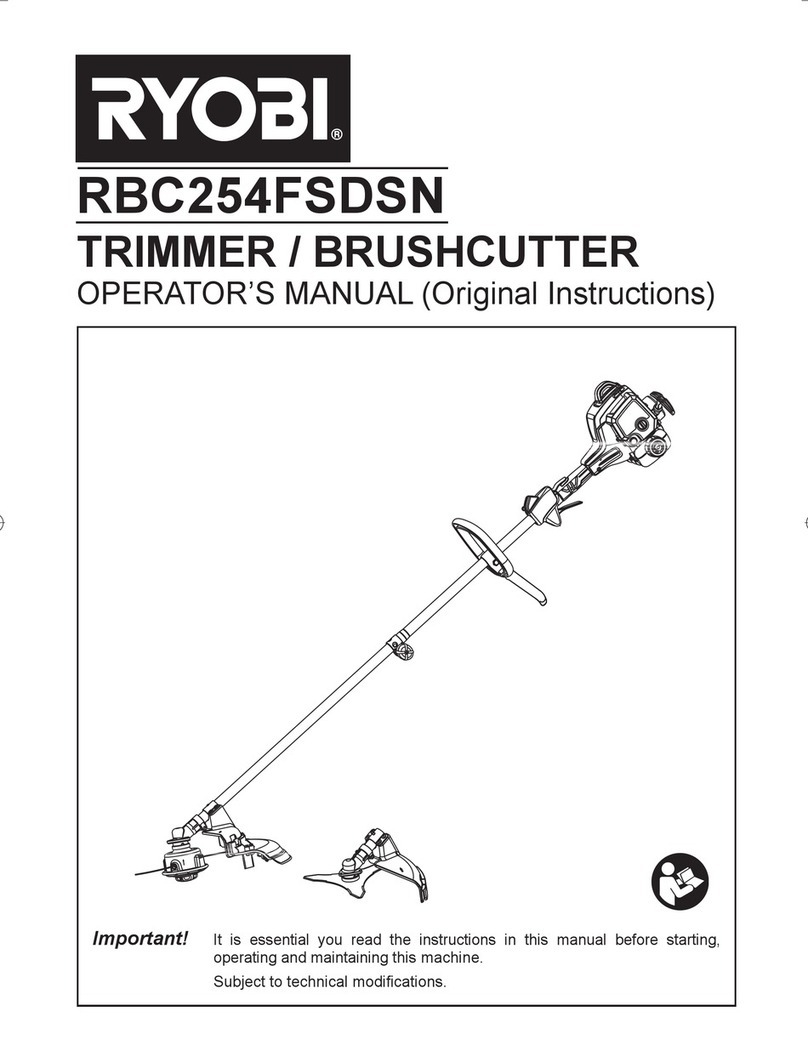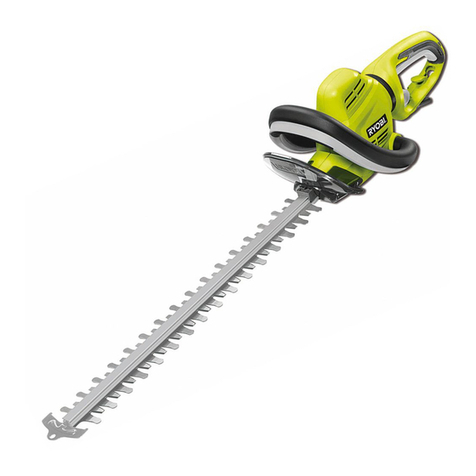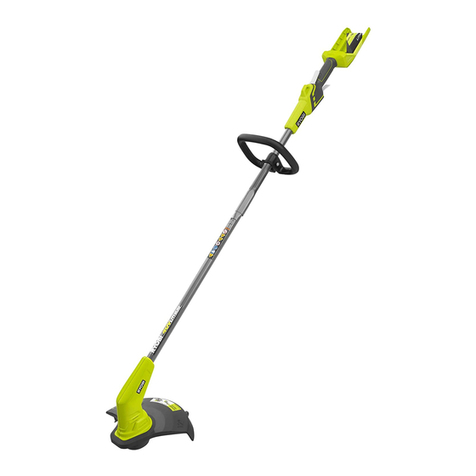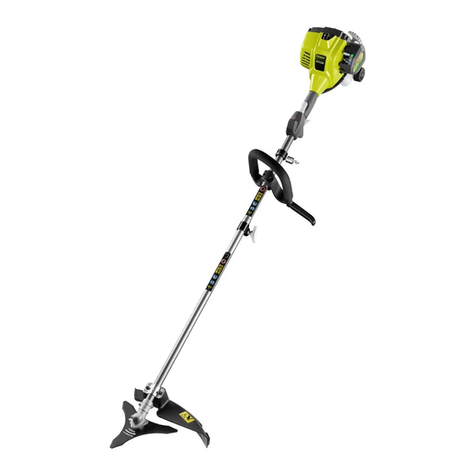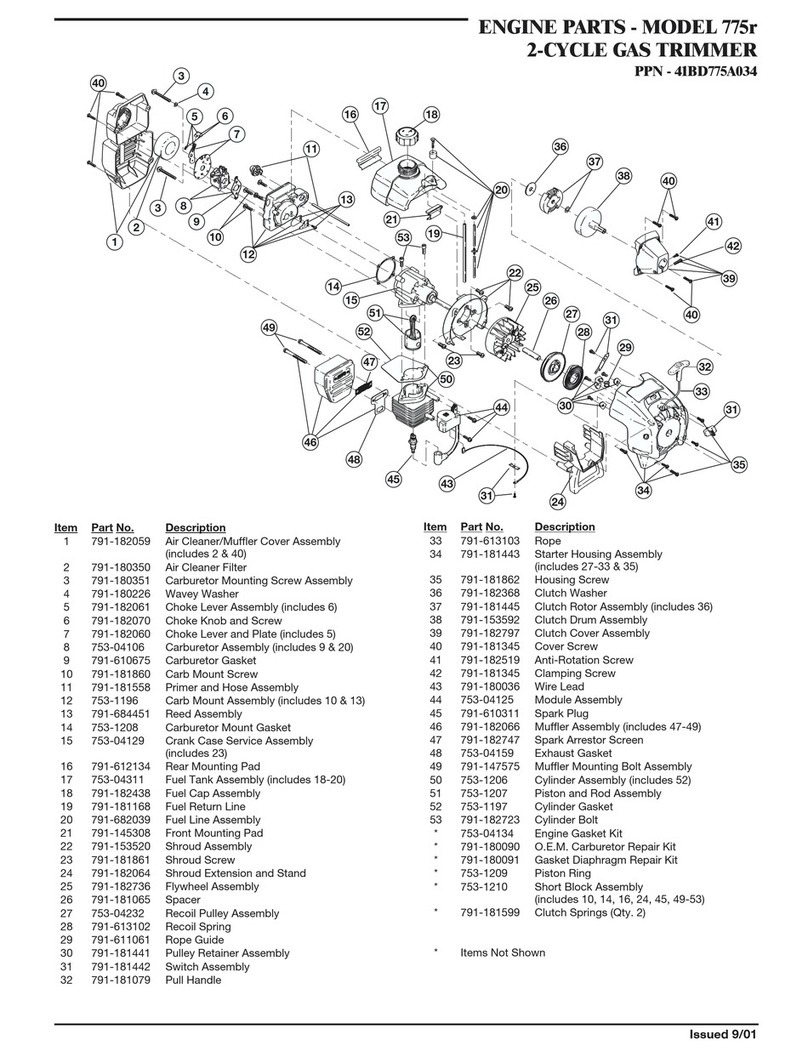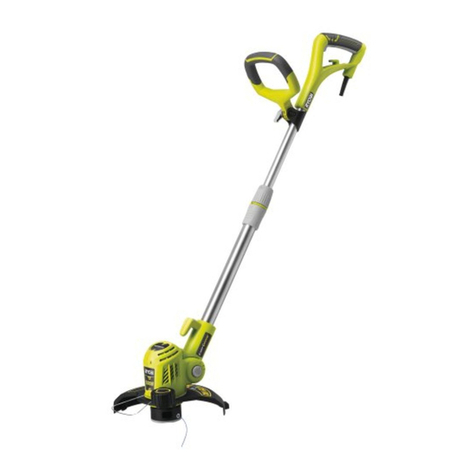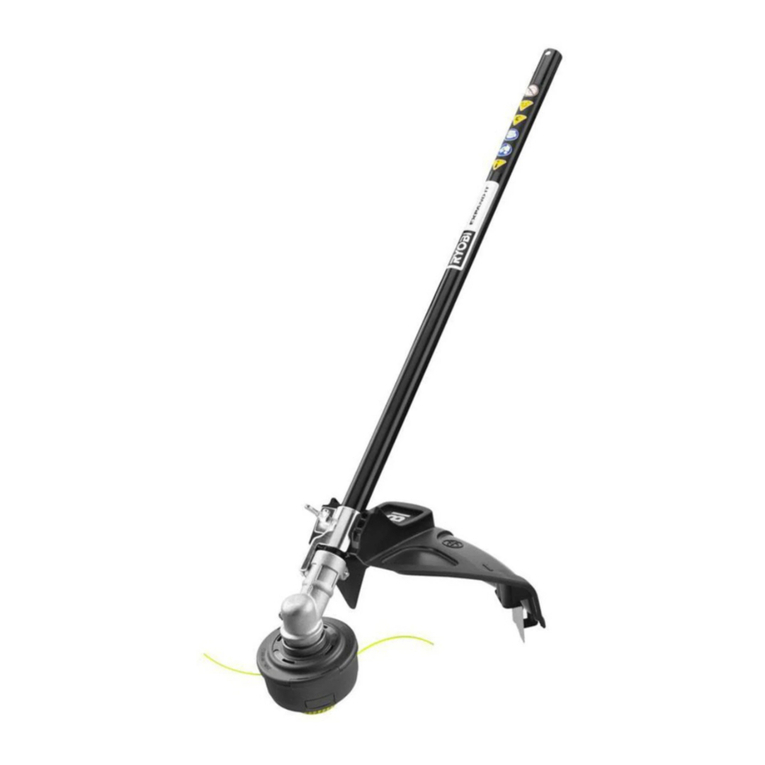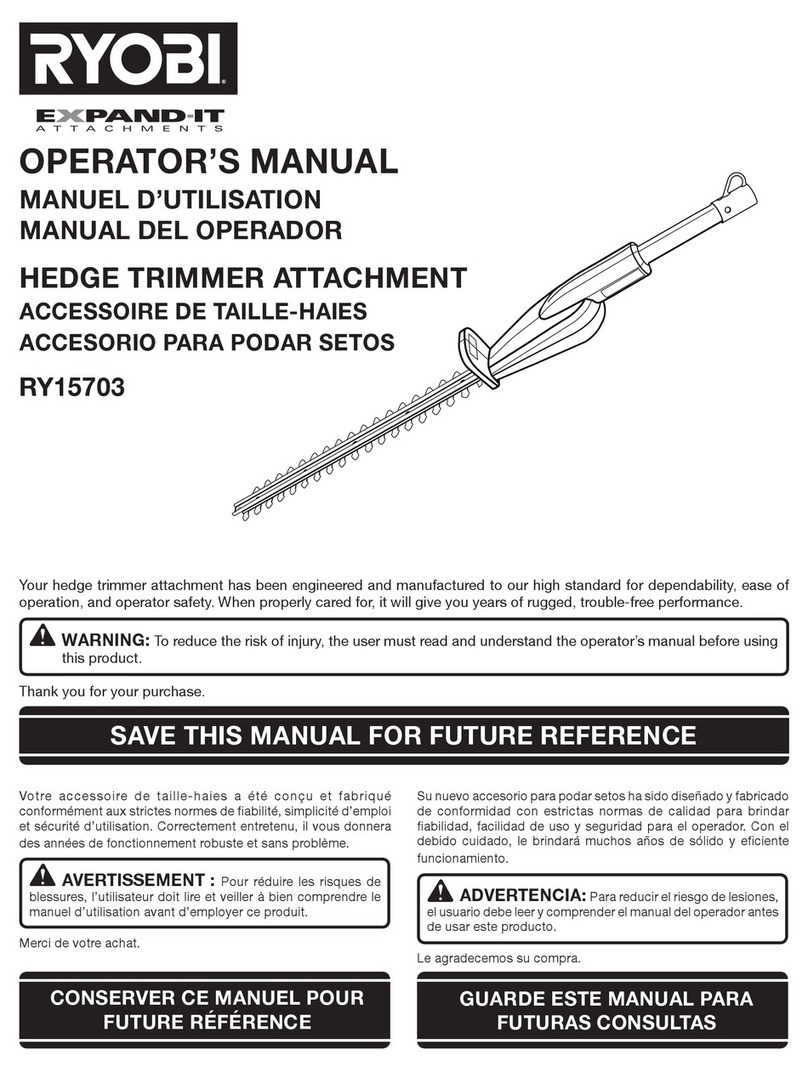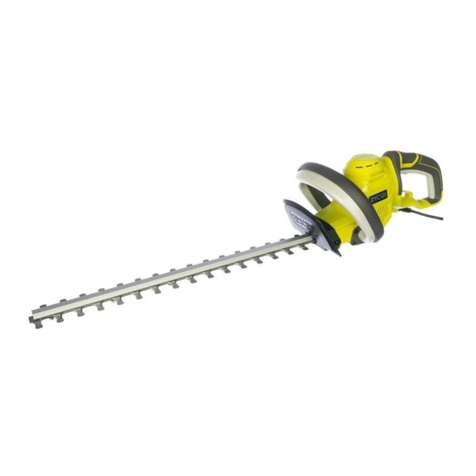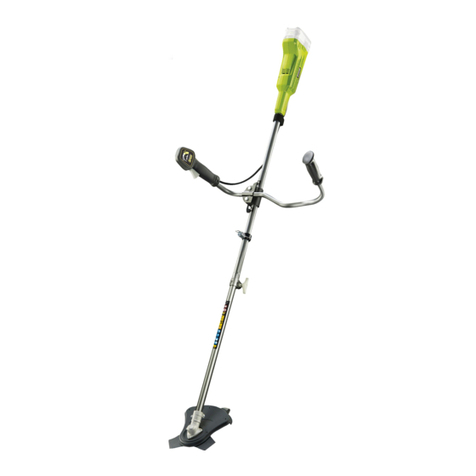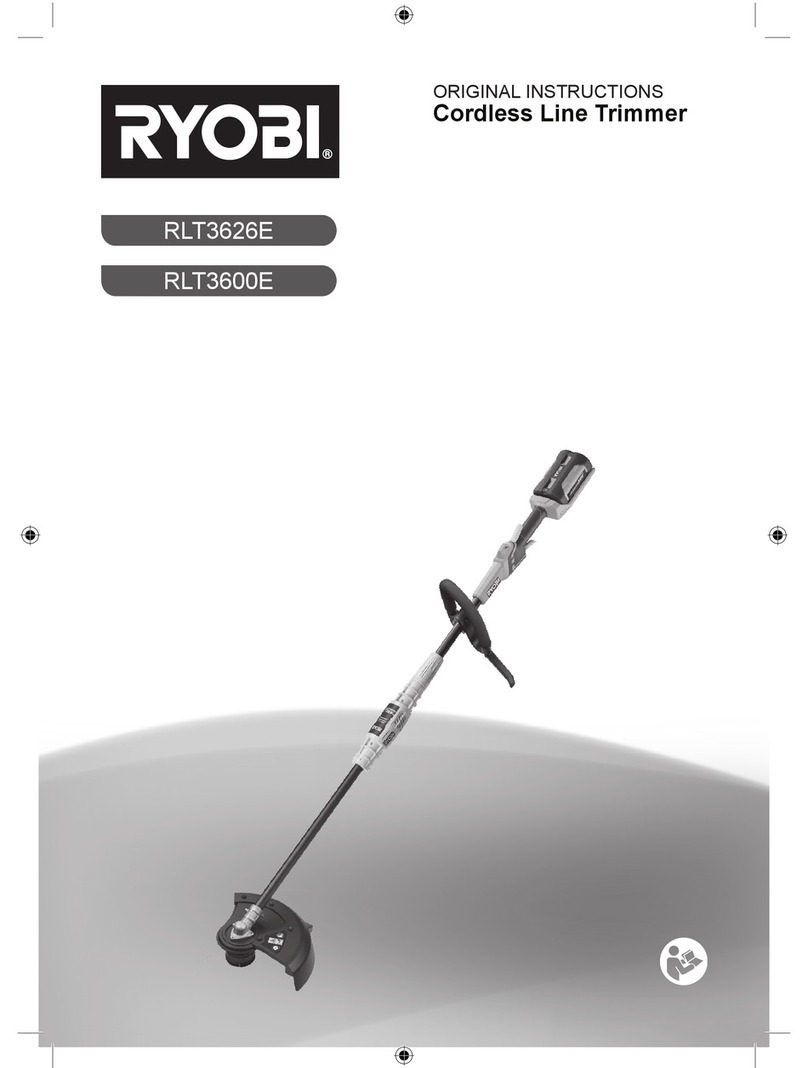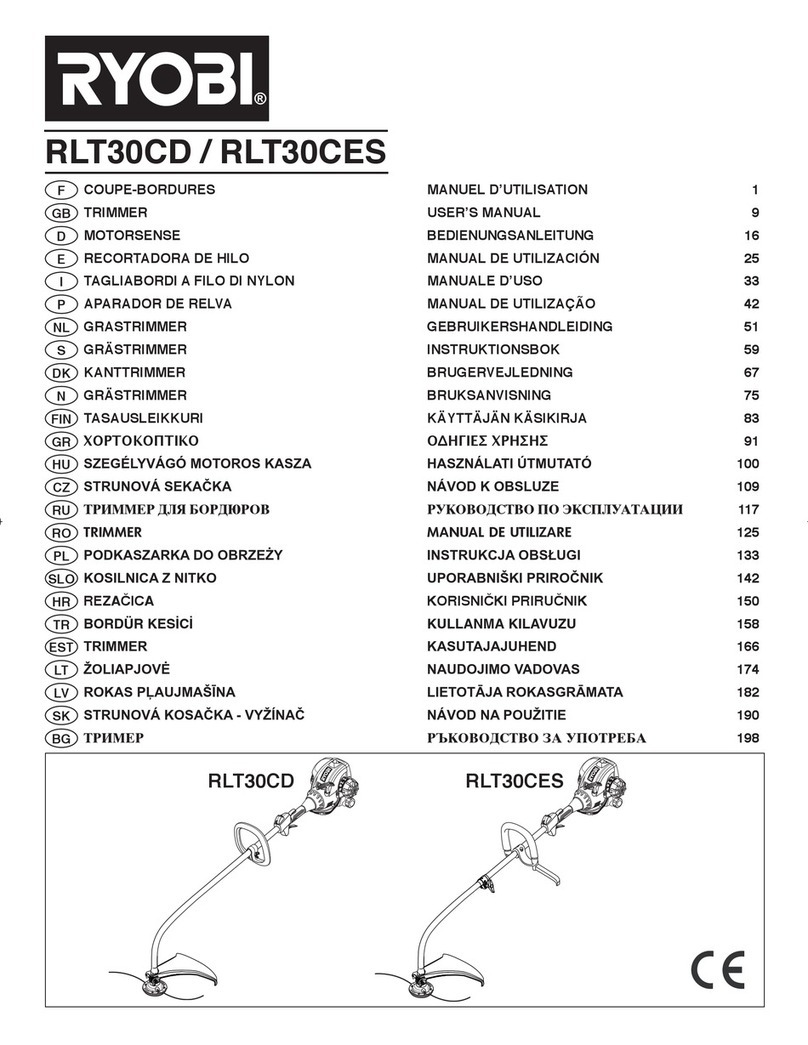
4
■Exercise caution to avoid slipping or falling.
■Always wear safety glasses with side shields.
Everyday eyeglasses have only impact-resistant
lenses; they are NOT safety glasses.
■Do not overreach or stand on unstable support. Keep
proper footing and balance at all times.
■Use only recommended accessories. The use of
improper accessories may cause risk of injury.
■Check damaged parts. Before further use of the
machine, a guard or other part that is damaged should
be carefully checked to determine that it will operate
properly and perform its intended function. Check for
alignment of moving parts, binding of moving parts,
breakage of parts, mounting and any other conditions
that may affect its operation. A guard or other part that
is damaged must be properly repaired or replaced by
an authorized service centre to avoid risk of personal
injury.
■Never leave machine running unattended. Turn the
power off. Do not leave machine until it comes to a
complete stop.
■This product is extremely noisy in operation. You must
wear ear protection to reduce the risk of long term
hearing injury.
■To reduce fire hazard, keep engine and silencer free of
debris, leaves, or excessive lubricant.
■Keep the exhaust pipe free of foreign objects.
■Follow manufacturer’s recommendations for safe
loading, unloading, transport, and storage of machine.
■Keep machine dry, clean, and free from lubricant and
grease. Always use a clean cloth when cleaning. Never
use brake fluids, petrol, petroleum-based products, or
any solvents to clean machine.
■Stay alert and exercise control. Watch what you are
doing and use common sense. Do not operate tool
when you are tired. Do not rush.
■Do not operate the product while under the influence
of drugs, alcohol, or any medication.
■Check the work area before each use. Remove all
objects such as rocks, broken glass, nails, wire, or
string which can be thrown or become entangled in
the machine.
■Do not use machine if switch does not turn it on and
off. Have defective switches replaced by an authorized
service centre.
■Before cleaning, repairing, or inspecting, shut off
the engine and make certain all moving parts have
stopped. Disconnect the spark plug wire, and keep the
wire away from the plug to prevent accidental starting.
■Avoid dangerous environment. Do not use in damp or
wet locations or expose to rain. Keep work area well lit.
■Never use in an explosive atmosphere.
■Do not operate while smoking or near an open flame.
■Do not operate at night, at times of heavy fog, or at any
other times when your field of vision might be limited
and it would be difficult to gain a clear view of area.
■Be familiar with all controls and the proper use of the
machine.
■Beware of overhead power lines.
■If the cutting mechanism strikes any foreign object
or the machine start making any unusual noise or
vibration, shut off the power source and allow the
machine to stop. Disconnect the spark plug wire from
the spark plug and take the following steps:
1. inspect for damage;
2. check for and tighten any loose parts;
3. have any damaged parts replaced or repaired with
parts having equivalent specications.
■Stop the engine and disconnect the spark plug wire
from the spark plug before
1. adjusting the working position of the cutting device;
2. cleaning or clearing a blockage; checking, mainte-
nance or working on the machine.
3. checking, maintenance or working on the machine.
■Do not inhale fuel fumes as they are toxic.
WARNING
Injuries may be caused, or aggravated, by prolonged
use of a tool. When using any tool for prolonged
periods, ensure you take regular breaks.
SPECIFIC SAFETY RULES
■Operate the unit with both hands.
■Do not operate around dry brush, twigs, cloth rags, or
other flammable materials.
■Never start the machine if ice has formed in any part
of the equipment.
■Do not use acids, alkalines, solvents, flammable
material, or industrial grade solutions in this product.
These products can cause physical injuries to the
operator and irreversible damage to the machine.
■Never attempt to make any adjustments while the
engine (motor) is running (except where specifically
recommended by the manufacturer).
■Protective covers must always cover rotating parts
when the engine is running.
■Keep cooling air intake (recoil starter area) and
